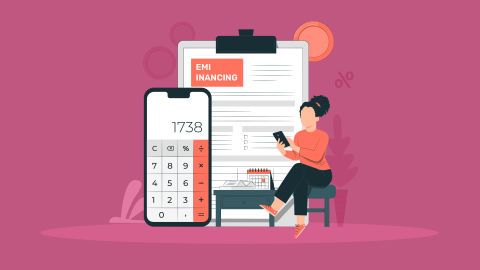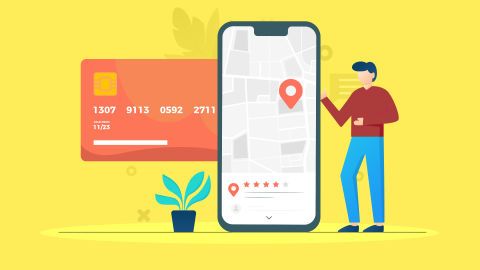A mobile phone, colloquially known as a cell phone, is a portable device that combines telecommunications capabilities with computing power. It allows users to make voice calls and send text messages from anywhere within a cellular network's coverage area. Modern smartphones, an evolution of the basic mobile phone, are equipped with broad functionalities including internet browsing, running software applications, and multimedia functionality. They have revolutionised communication, bringing together voice, data, and video services in a single handheld device. This technology is integral to modern life, facilitating connectivity and access to information globally. Let’s look at the advantages and disadvantages of mobile phones.
Check your eligibility for a Bajaj Finserv Insta EMI Card today. You may already be eligible—find out by entering your mobile number and completing OTP verification.
Overview about Advantages and Disadvantages of Mobile Phones
Mobile phones have become ubiquitous, evolving from their 20th-century origins as bulky, basic communication tools to sleek, multifaceted devices central to modern connectivity. Today’s smartphones are equipped with advanced operating systems that support a wide range of applications, from navigation and social networking to business management and gaming. High-resolution cameras, robust processing power, and large memory capacities are standard. With continuous advancements in technology, mobile phones are not just communication devices but powerful computing tools that have transformed both personal and professional landscapes.
Advantages of mobile phones
Mobile phones offer convenience, connectivity, and access to information on the go. From instant communication to online shopping and digital payments, they enhance productivity and entertainment. Their versatile features make them essential tools for both personal and professional life.
Advantages |
Description |
Communication |
Instant connectivity through calls, texts, video calls, and social media. |
Portability |
Compact and lightweight, easy to carry anywhere for constant accessibility. |
Entertainment |
Access to music, videos, games, and streaming platforms for leisure activities. |
Education |
Online learning apps, e-books, and access to a vast pool of information. |
Productivity |
Tools for note-taking, scheduling, reminders, and professional apps enhance efficiency. |
Navigation |
GPS and maps for real-time directions and location tracking. |
Photography |
Built-in high-resolution cameras for capturing moments and creating content. |
Emergency use |
Quick access to emergency contacts and safety apps in critical situations. |
E-commerce |
Easy online shopping and mobile banking for convenience. |
Health monitoring |
Apps to track fitness, monitor health, and access telemedicine services. |
Social connectivity |
Stay connected with family, friends, and professional networks through various apps. |
Customisation |
Personalisation with apps, themes, and settings to meet individual needs. |
Disadvantages of mobile phones
While mobile phones offer many benefits, excessive use can lead to health issues, reduced attention span, and digital addiction. They may also cause privacy concerns and social isolation. Overdependence on smartphones can affect productivity and real-world interactions if not used mindfully.
Disadvantages |
Description |
Health issues |
Prolonged use can lead to eye strain, sleep disorders, and increased risk of radiation exposure. |
Addiction |
Excessive use may result in mobile addiction, affecting productivity and social interactions. |
Social disconnect |
Overuse can lead to reduced face-to-face communication and weaken personal relationships. |
Distractions |
Frequent notifications and apps can cause distractions, reducing focus in work or studies. |
Cybersecurity risks |
Susceptibility to hacking, phishing, and data theft due to weak security measures. |
Cost |
High purchase, repair, and data plan costs can burden users financially. |
Privacy concerns |
Apps and services often collect user data, raising privacy issues. |
Environmental impact |
Improper disposal leads to e-waste, harming the environment. |
Dependence |
Over-reliance on phones for daily tasks can reduce critical thinking and problem-solving skills. |
Accidents |
Using phones while driving or walking can result in accidents and injuries. |
Battery life |
Limited battery life often causes inconvenience during critical moments. |
Fake information |
Easy access to unverified content and misinformation can spread rapidly. |
Check your eligibility for a Bajaj Finserv Insta EMI Card today. You may already be eligible – find out by entering your mobile number and completing OTP verification.
List of mobile phones available on EMI
Various mobile phones are available for purchase on EMI (Equated Monthly Installment) plans, making it easier for consumers to buy the latest devices without paying the full price upfront. Brands like Apple, Samsung, OnePlus, and Xiaomi offer their flagship and mid-range models through EMI options. This payment method is facilitated by financial services like credit card companies and financial institutions that partner with retailers to provide manageable payment terms, thus broadening access to newer technology for a larger audience.
Brand |
Model |
Key Features |
Tenure Options |
Apple |
iPhone 15 Pro Max |
A17 Pro chip, 120Hz ProMotion Display, 48MP Camera |
3-24 months |
Samsung |
Galaxy S24 Ultra |
Snapdragon 8 Gen 3, 200MP Camera, S Pen |
3-24 months |
OnePlus |
OnePlus 12 |
Snapdragon 8 Gen 3, 50MP Triple Camera |
3-18 months |
Xiaomi |
Xiaomi 14 Pro |
Snapdragon 8 Gen 3, 120W Fast Charging |
3-18 months |
Vivo |
Vivo X100 Pro |
MediaTek Dimensity 9300, 50MP Zeiss Camera |
3-18 months |
Realme |
Realme GT 5 Pro |
Snapdragon 8 Gen 3, 144Hz AMOLED Display |
3-12 months |






